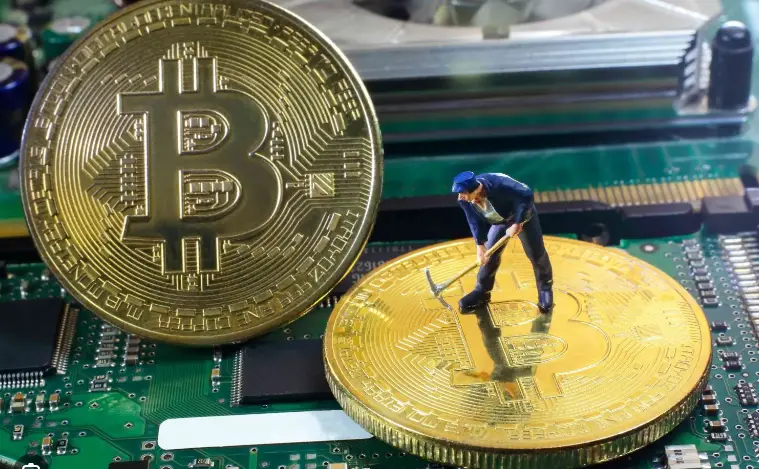Bitcoin (BTC) is a virtual currency designed to function as a currency and payment method independent of any individual, group, or organization. This eliminates the need for a trusted third party (such as a bank or issuing authority) to be involved in financial transactions. Bitcoin was introduced to the public in 2009 by an anonymous developer or group of developers using the name Satoshi Nakamoto. It has become the world’s largest and most popular cryptocurrency. Its popularity has spurred the development of many other cryptocurrencies.
What is Bitcoin?
Bitcoin (BTC) is a cryptocurrency (virtual currency) designed to function as money and as a form of payment that is outside the control of any individual, group, or organization. This eliminates the need for a trusted third party (e.g. a mint or bank) to be involved in financial transactions.
The Birth of Bitcoin
In August 2008, the domain name Bitcoin.org was registered. It was created by Satoshi Nakamoto and Martti Malmi, who worked with the anonymous Nakamoto to develop Bitcoin.

In October 2008, Nakamoto announced to the cryptography mailing list at metzdowd.com: “I have been working on a new electronic cash system that is completely peer-to-peer, requiring no trusted third party.” The famous white paper published on Bitcoin.org, titled “Bitcoin: A Peer-to-Peer Electronic Cash System,” would become the Magna Charter for how Bitcoin operates today.
The Genesis Block and the Birth of Bitcoin
On January 3, 2009, the first Bitcoin block was mined. Known as Block 0, it is also known as the genesis block and contains the text: “The Times 03/Jan/2009 Chancellor on brink of second bailout for banks”, which may be evidence that the block was mined on or after that date.
Bitcoin Mining
Bitcoin mining rewards are halved every 210,000 blocks. For example, the block reward was 50 new bitcoins in 2009. On May 11, 2020, the third halving occurred, reducing the reward per block to 6.25 bitcoins. The fourth halving occurred in April 2024 and reduced the reward to 3.125 bitcoins. The next halving will occur in mid-2028 and reduce the reward to 1.5625 BTC.

Bitcoin Unit
Bitcoins can be divided into up to 8 decimal places (100 millionths of a bitcoin), and this smallest unit is called a Satoshi. On January 8, 2009, the first version of the Bitcoin software was released to the Cryptography Mailing List, and on January 9, 2009, Block 1 was mined, and Bitcoin mining began.
Bitcoin Blockchain Technology
Understanding Blockchain
Bitcoin as a digital currency is not difficult to understand. For example, if you own a bitcoin, you can use your cryptocurrency wallet to send smaller pieces of that bitcoin as payment for goods or services. However, how Bitcoin actually works is more complicated.
Blockchain is a distributed ledger, a shared database of information linked together through cryptographic techniques. Distributed means that it is stored on many computers instead of on a centralized server like the traditional way of storing data. A network of automated programs installed on these computers maintains the blockchain and performs the functions necessary for it to operate.

A block on the blockchain is a file that contains a block header, a transaction counter, and the transactions recorded in that block. The transaction counter lists how many transactions are in the block, while the block header is made up of several elements:
-
- Software Version: The version of the blockchain running (sometimes called the magic number)
- Previous block hash: Encrypted information from the previous block
- Merkle Root: A single hash (encrypted information) containing all hashed information from previous transactions
- Timestamp: Date and time the block was opened
- Difficulty Target: The current network difficulty problem that miners are trying to solve
- Nonce: Short for “one-time number”, used to solve the mining problem and unlock the block
As noted, each block contains the hashed information of the previous block. This creates a chain of encrypted blocks (files) containing information from all previous blocks, going back to the first block of the blockchain.
Encryption in Bitcoin
Bitcoin uses the SHA-256 hashing algorithm to encrypt (hash) the data stored in blocks on the blockchain. Simply put, the transaction data stored in a block is encrypted into a 256-bit (64-digit) hexadecimal number. That number contains all the transaction data and information associated with the blocks before that block.

While the data in one block is encrypted and used in the next block, that block is not inaccessible or unreadable. The hash is used in the next block, then its hash is used in the next block, and so on, but all blocks can be read. This makes it impossible for blocks to be changed without changing all the other blocks, and ensures that anyone can verify the blockchain.
How Bitcoin Works
Because Bitcoin is a decentralized system, it does not have a central authority that controls or manages it. Instead, it relies on a distributed network of computers called “nodes” to validate and record all Bitcoin transactions.
These nodes are called “miners” because they use their computers to solve complex mathematical problems, called “mining puzzles,” to validate transactions and add them to the blockchain. When a miner solves the puzzle, they receive a Bitcoin reward.
Blockchain is used to record all Bitcoin transactions that have taken place, ensuring that each bitcoin can only be used once and cannot be copied or counterfeited. This is necessary to prevent “double spending”, where one person can use the same bitcoin multiple times.
How to Buy and Use Bitcoin
Before Bitcoin
If you don’t want to mine bitcoin, you can buy it using a cryptocurrency exchange. Most people won’t be able to buy a whole BTC due to its price, but you can buy fractions of a BTC with fiat currency, such as US dollars, on these exchanges.

For example, you can buy bitcoin on Coinbase by creating and funding your account using a bank account, credit card, or debit card.
Use Bitcoin
Due to its decentralized and unregulated nature, Bitcoin can be used for a variety of purposes:
- Investment and speculation : Many people buy Bitcoin in the hope that its value will increase in the future, allowing them to resell it at a profit.
- Payments and value exchange : Bitcoin can be used to purchase goods and services from people who accept Bitcoin as payment. It can also be used to send money to other people.
- Avoids Government Control : Since Bitcoin is not controlled by any government, organization or individual, it can be used to avoid government interference in financial transactions.
Risks of Using Bitcoin
While Bitcoin has many advantages, it also comes with significant risks:
- Price volatility : Bitcoin’s value often fluctuates wildly, sometimes increasing or decreasing by tens of percent in a short period of time.
- Security risks and scams : Bitcoin wallets can be hacked and bitcoins can be stolen. Additionally, Bitcoin-related scams are also common.
- Lack of Regulation : Since Bitcoin is not controlled by any central organization, it is not protected by the same safety and security measures as traditional financial systems.
Therefore, investing in and using Bitcoin should be done with caution and a full understanding of the risks involved.
Conclude
Bitcoin is a unique and promising phenomenon in the world of money and technology. It has opened a new era of decentralized cryptocurrency, challenging traditional financial systems and empowering individuals in transactions.
However, using and investing in Bitcoin is not without certain risks and challenges. Price volatility, security risks, and lack of regulation are significant concerns that Bitcoin market participants need to be aware of. Therefore, in order to take advantage of Bitcoin’s potential, it is extremely important to have a full understanding and knowledge of this technology. Only by understanding both the opportunities and challenges can participants safely and effectively utilize the power of Bitcoin.






